
‘Study for Composition VIII (The Cow)’, by Theo van Doesburg, c.1918, via WikiPaintings.
Yesterday’s post on this ILRI News Blog, Livestock, poverty and the environment: A balancing act and a balanced account, highlighted the overviews and conclusions provided in a new science paper on the roles of livestock in developing countries.
The paper, written by scientists at the International Livestock Research Institute (ILRI), also provides a wealth of research-based livestock facts little known (and less cited) in current global debates on the roles farm animals play in reducing or promoting global poverty, hunger, malnutrition, gender inequality, ill health, infectious disease and environmental harm.
The authors of the paper argue that no single, or simple, way exists to view, approach or resolve issues at the interface of livestock and these big global problems.
Consider the following facts / complicating factors cited in the new paper.
LIVESTOCK AND POVERTY
Up to 1.3 billion people globally are employed in different livestock product value chains globally (Herrero et al. 2009). Milk and meat rank as some of the agricultural commodities with the highest gross value of production (VOP) in the developing world (FAOSTAT 2011). Nearly 1 billion people living on less than 2 dollars a day in South Asia and sub-Saharan Africa keep livestock (FAO 2009). More than 80% of poor Africans keep livestock and 40–66% of poor people in India and Bangladesh keep livestock (FAO 2009). Some 68% of households in the developing world earn income from livestock (Davis et al. 2007). Across the developing world, livestock contribute, on average, 33% of household income in mixed crop-livestock systems and 55% of pastoral incomes (Staal et al. 2009). The growth in demand for milk and meat, mainly driven by urban consumers in developing countries, has been increasing in the last few decades and is projected to double by 2050 (Delgado et al. 1999, Rosegrant et al. 2009).
LIVESTOCK AND HUNGER
‘Livestock contribute greatly to global food security: they directly provide highly nourishing animal-source foods; they provide scarce cash income from sales of livestock and livestock products used to purchase food; their manure and traction increase household cereal supplies; and increases in livestock production can increase access by the poor to livestock foods through lower prices of livestock products.’
- Livestock systems in developing countries now produce about 50% of the world’s beef, as well as 41% of our milk, 72% of our lamb, 59% of our pork and 53% of our poultry future (Herrero et al. 2009); all these shares are expected to increase in future (Bruinsma 2003, Rosegrant et al. 2009).
- Most meat and milk in the developing world comes from so-called ‘mixed’ crop-and-livestock systems [which] . . . are central to global food security, as they also produce close to 50% of the global cereal output (Herrero et al. 2009 and 2010).
LIVESTOCK AND MALNUTRITION
‘Although livestock and fish clearly make important contributions to overall food security, there is an even more important role of animal source foods in achieving nutrition, as opposed to food, security. Animal source foods are dense and palatable sources of energy and high-quality protein, important for vulnerable groups, such as infants, children, pregnant and nursing women and people living with human immunodeficiency virus with high nutritional needs. They also provide a variety of essential micronutrients, some of which, such as vitamin A, vitamin B12, riboflavin, calcium, iron, zinc and various essential fatty acids, are difficult to obtain in adequate amounts from plant-based foods alone (Murphy and Allen 2003). Animal source foods provide multiple micronutrients simultaneously, which can be important in diets that are lacking in more than one nutrient: for example, vitamin A and riboflavin are both needed for iron mobilisation and haemoglobin synthesis, and supplementation with iron alone may not successfully treat anaemia if these other nutrients are deficient (Allen 2002). Micronutrients in animal source foods are also often more readily absorbed and bioavailable than those in plant-based foods (Murphy and Allen 2003).’
LIVESTOCK AND GENDER INEQUALITY
‘Almost two-thirds of the world’s billion poor livestock keepers are rural women (Staal et al. 2009). . . . Livestock are an important asset for women because it is often easier for women in developing countries to acquire livestock assets . . . than it is for them to purchase land or other physical assets or to control other financial assets (Rubin et al. 2010). . . . Livestock assets are generally more equitably distributed between men and women than are other assets like land (Flintan 2008). . . . Women generally play a major role in managing and caring for animals, even when they are not the owners. . . . Despite the role of women in livestock production, women have lower access to technologies and inputs than men and there are gender disparities in access to extension services, information and training throughout the developing world due to women’s long workdays, a neglect of women’s needs and circumstances when targeting extension work, and widespread female illiteracy.’
LIVESTOCK AND ILL HEALTH
‘In developing countries, human health is inextricably linked to the livestock, which underpin the livelihoods of almost a billion people . . . . Livestock have an essential role in contributing to good health through providing animal source food, manure and draft power for plant source food, as well as income to buy food and health care. At the same time, livestock can lead to poor health if animal source foods contribute to poor diet and through providing a reservoir for diseases infectious to people (zoonoses). The relationship between livestock, human nutrition and human health are complex, with multiple synergistic and antagonistic links . . . . For example, poor livestock keepers worldwide face daily trade-offs between selling their (relatively expensive) milk, meat and eggs to increase their household income and consuming the same (high-quality) foods to increase their household nutrition. Because animal source foods are so dense in nutrients, including micronutrients that help prevent ‘hidden hunger’, decisions in these matters have potentially large implications for the nutritional and economic health of households. Livestock contributes to food security and nutrition in various ways.’
LIVESTOCK AND INFECTIOUS DISEASE
‘In poor countries, infectious disease still accounts for around 40% of the health burden in terms of years lost through sickness and death (WHO 2008). Livestock directly contribute to this through the foodborne diseases transmitted through animal source foods, the zoonoses transmissible between livestock and people, and human diseases emerging from livestock. A recent estimate suggests that 12% of the infectious disease burden in least developed countries is due to zoonoses, and the majority of this is transmitted to people from livestock hosts through consumption of animal source foods, vectors or direct contact (Grace et al. 2012). More indirectly, keeping of livestock affects agro-ecosystems in ways that influence their ability to provide health-provisioning services. This may be positive or negative. In some circumstances, livestock act as a buffer, for example, between trypanosomosis-carrying tsetse or malaria-carrying mosquitoes and people; in this case, livestock act as alternative hosts, effectively protecting people. In other cases, livestock are an amplifying host, for example pigs harbouring and multiplying Japanese encephalitis and thus increasing the risk it poses to people.’
- Food-borne disease is the world’s most common illness and is most commonly manifested as gastrointestinal disease; diarrhoea is one of the top three infectious diseases in most developing countries, killing an estimated 1.4 million children a year (Black et al. 2010).
- In countries where good data exist, zoonotic pathogens are among the most important causes of food-borne disease (Thorns 2000, Schlundt et al. 2004).
- Animal-source food is the most risky of food commodities (Lynch et al. 2006), with meat and milk providing excellent mediums for microbial growth.
- Most human diseases come from animals, with some 61% being ‘zoonotic’, or transmissible between animals and humans, including many of the most important causes of sickness and death.
- Endemic zoonoses that prevail in poor countries are among the most neglected diseases.
- Zoonoses (diseases transmissible between animals and man) and diseases recently emerged from animals (mostly human immunodeficiency virus [HIV]-acquired immunodeficiency syndrome) make up 25% of the infectious disease burden in the least developed countries (Gilbert et al. 2010).
- Currently, one new disease is emerging every four months, and 75% of these originate in animals (Jones et al. 2008).
LIVESTOCK AND ENVIRONMENTAL HARM
‘The impacts of livestock on the environment have received considerable attention as the publication of the Livestock’s Long Shadow study (Steinfeld et al. 2006). This study helped draw attention to the magnitude and scale of livestock’s impact on land use, greenhouse gas (GHG) emissions and pollution among others, and it created a thrust for the sector’s stakeholders to develop research agendas geared towards generating better data for the environmental assessment of global livestock systems, and to develop solutions for mitigating environmental livestock problems, and policy agendas more conducive to a greening of the sector by promoting regulation, increases in efficiency and others.’
Land: For grazing or fodder?
- Livestock systems are one of the main users of land; livestock use some 3.4 billion ha for grazing and 0.5 million ha of cropland for the production of feeds (33% of arable land), globally (Steinfeld et al. 2006).
- Of the world’s 3.4 billion ha of grazing lands, 2.3 million ha (67%) are in the developing world, with expansion of pastureland at the expense of natural habitats in the developing world in the order of 330 million ha in the last 40 years (FAO 2009).
- The world will require an additional 450 million tonnes of grain to meet demand for animal products by 2050 (Rosegrant et al. 2009).
Climate change: Decrease livestock numbers or increase livestock efficiencies? (or both?)
- Livestock are an important contributor to global greenhouse gas emissions causing global warming; current estimates range from 8.5% to 18% of global anthropogenic greenhouse gas emissions (O’Mara 2011), with the range reflecting methodological differences (inventories v. life cycle assessment), attribution of emissions to land use (Herrero et al. 2011, O’Mara 2011) and uncertainty in parameter values (FAO 2010).
- Livestock in the developing world contribute 50% to 65% of the total emissions from livestock in the world. (Herrero et al. 2013).
- The higher the productivity of farm animals, the lower the emissions per unit of their products (FAO 2010).
- While livestock systems in general terms generate significantly more greenhouse gas emissions per kilocalorie than crops, the potential for the livestock sector to mitigate such emissions is very large (1.74 Gt CO2-eq per year, Smith et al. 2007), with land-use management practices representing over 80% of this potential (Smith et al. 2007) and with most of the mitigation potential (70%) lying in the developing world (Smith et al. 2007).
Livestock manure: Waste or resource?
- Livestock wastes—considered a serious problem in the developed world—are a critical agricultural resource in large parts of Africa, where soils are inherently poor (Petersen et al. 2007, Rufino et al. 2007).
- Manure contributes between 12% and 24% of the nitrogen input in nitrogen cycles in cropland in the developing world (Liu et al. 2010).
- Recycling of animal manures is practiced in most mixed crop-livestock systems, although efficiencies are rarely close to those of the developed world (Rufino et al. 2006).
- Synthetic fertilizers are unaffordable for most small-scale farmers, who depend on the (poor) fertility of their soils to produce food crops, or on livestock to concentrate nutrients from the relatively large grazing lands (Herrero et al. 2013).
- In many farming systems, the production of food crops directly relies on animal manures to increase effectiveness of fertilizers applied to cropland (Vanlauwe and Giller 2006).
- Although animal manure can be a very effective soil amendment, its availability at the farm level is often very limited, so designing technologies for soil fertility restoration only around the use of animal manure is unrealistic.
Payments for environmental services: Exclude or include livestock keepers?
- Despite the fact that livestock is widely distributed in virtually all agro-ecosystems of the developing world, few ‘payment for environmental services’ schemes have targeted livestock keepers; most have focused on such services as climate, water and wildlife (Landell-Mills and Porras 2002, Wunder 2005).
- Enhancing the role that rangelands play in maintaining ecosystem services through improved rangeland management could be of essential importance for enhancing global green water cycles (Rockström et al. 2007).
- In Africa, where close to half of the pastoralists earn less than US$1/day, it’s estimated that even modest improvements in natural resource management in the drylands may yield gains of 0.5 t C/ha per year, which translates into US$50/year, bringing about a 14% increase in income for the pastoralist (Reid et al. 2004).
Read the whole paper
The roles of livestock in developing countries, by ILRI authors Mario Herrero, Delia Grace, Jemimah Njuki, Nancy Johnson, Dolapo Enahoro, Silvi Silvestri and Mariana Rufino, Animal (2013), 7:s1, pp 3–18 & The Animal Consortium 2012, doi:10.1017/S1751731112001954
Read related articles
Livestock, poverty and the environment: A balancing act—and a balanced account, 3 Apr 2012
Taking the long livestock view, 23 Jan 2013
Greening the livestock sector, 22 Jan 2013
Livestock livelihoods for the poor: Beyond meat, milk and eggs, 8 Jan 2013
A fine balancing act will be needed for livestock development in a changing world, 7 Dec 2012
Fewer, better fed, animals good for the world’s climate and the world’s poor, 22 Nov 2012
Scientific assessments needed by a global livestock sector facing increasingly hard trade-offs, 12 Jul 2013.
A new global alliance for a safer, fairer and more sustainable livestock sector, 13 Apr 2012
Sharing the space: Seven livestock leaders speak out on a global agenda, 20 Mar 2012
Towards a more coherent narrative for the global livestock sector, 15 Mar 2012
Developing an enabling global livestock agenda for our lives, health and lands, 13 Mar 2012
Acknowledgements
This paper is an ILRI output of two CGIAR Research Programs: Livestock and Fish and Climate Change, Agriculture and Food Security.



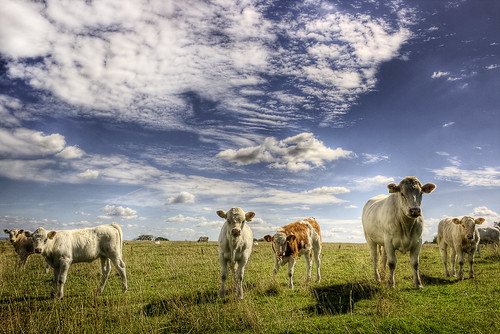
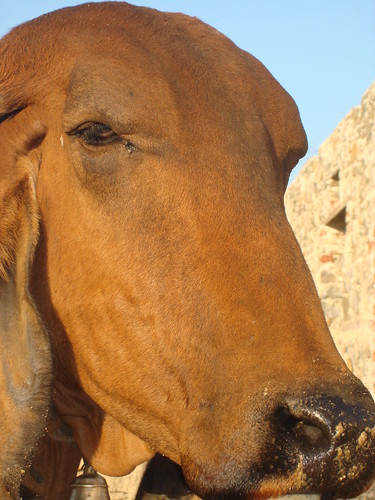
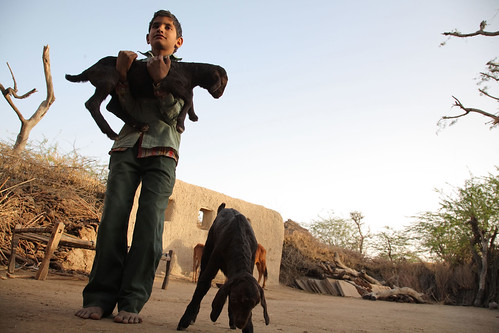

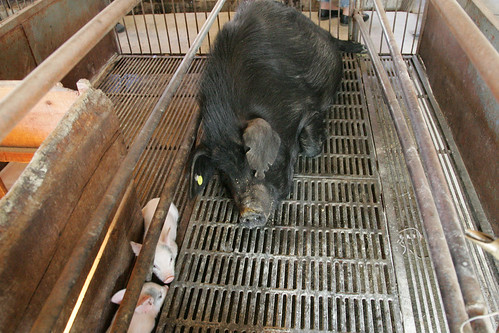


 This post is part of a series associated with the ILRI Annual Program Meeting in Addis Ababa, April 2010.
This post is part of a series associated with the ILRI Annual Program Meeting in Addis Ababa, April 2010. 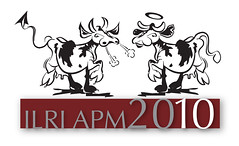 Later this month, many staff, partners and members of the board of trustees of the International Livestock Research Institute (ILRI) will gather in Addis Ababa, Ethiopia, for the institute’s annual program meeting. Alan Duncan, chair of the organizing committee, introduces below the theme for this meeting. ‘Livestock: the good, the bad and the ugly’.
Later this month, many staff, partners and members of the board of trustees of the International Livestock Research Institute (ILRI) will gather in Addis Ababa, Ethiopia, for the institute’s annual program meeting. Alan Duncan, chair of the organizing committee, introduces below the theme for this meeting. ‘Livestock: the good, the bad and the ugly’.